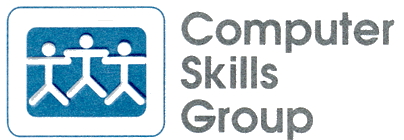

When we speak to someone face-to-face, what we communicate is heavily influenced by all the subtleties of our appearance, our gestures, and the inflection in our voice. It becomes much more difficult to accurately communicate our intended message when we limit ourselves to the written word alone. The sentence, "I really loved that", can be intended to be taken literally, in that you truly loved something. It can just as easily mean just the opposite when delivered with sarcasm (you hated it). When writing an email, what can you do to make a reader understand which meaning you had in mind?
Well, the computer based writers have come up with something they call emoticons. These are nothing more than tiny images you can imbed in text, that add a visual aspect to your message.
Here is the same sentence delivered in two very different ways:
Using emoticons can't replace face-to-face communications, but they are at least a step in the right direction. It's not hard to tell in the examples that the author was angry in the second instance, but happy in the first.
To use emoticons in email, you need to do three things:
How to collect emoticons for your use -
Some Internet Service Providers (ISPs) and email services are building emoticons into their email programs now.
If you already have access to these, you don't need to read the rest of the tip!
Packages of emoticons are also being offered for sale, often with quite fancy images.
That's fine too, but the basic purpose can be satisfied with just a few and you don't need to spend money acquire the basic images.
Here's how I get most of mine:
One more note, before you encounter it. Moving images can sometimes be saved and sometimes not. If you go to save one and it shows an extension of "(filename).gif", it is saving the full movement. If you go to save it and it tells you it is saving "(filename).bmp", then you won't be getting the movement. Instead, you will only get a snapshot, as though you took a conventional photo of the image, frozen at one instant in time. You might still want to do that, but the movement has been lost. If I ever figure out how to get around that, I'll let you know.
Configuring to use HTML in outgoing email -
In email programs, you have a choice of setting up to create emails using "plain text" or "HTML" (which stands for "HyperText Markup Language" - don't you just hate that!).
Some programs, such as Outlook, offer a third choice called "Rich Text".
Think of this in terms of gasoline.
There is "regular", "middle-grade", and "premium".
Rich Text is the "middle grade", half way between plain text and HTML.
If you are going to use images (including photos, by the way) in your email text, you need to be configured to use "HTML".
Emoticons are just pictures (images) and plain text doesn't allow for images to be included.
I recommend and personally use the HTML setting.
There are reasons why some people would want to use plain text or rich text, but from a practical point-of-view, you are limiting what you can do and see via the Internet.
All email programs are designed differently, so locating the HTML option setting will be different for each.
Now, how to insert emoticons into your emails -
As you are typing an email and you come to a place where you want to insert an image (any image, including a photo), simply go to your main menu and select Insert, Picture....
From the window that opens, use browse to locate your smiley faces folder and select the image you want to insert.
Exit normally and you will find your smiley face in the text of your email.
Nothing to it.
Windows will usually "remember" the last folder you inserted an image from.
Insert a second image and you won't need to locate the folder.
It will go straight to it.
One more note about plain text -
A lot of people send email in plain text.
They probably don't even realize that they are doing it, and don't know how to change it anyway.
You will find that when you go to reply or forward a plain text email, you can't insert images.
The email came to you in plain text and wants to stay in that format.
In Outlook or Outlook Express, once you have hit reply or forward, you can change the format of your message by selecting Format, HTML from the main menu.
Again, this is how these two programs do it.
If you use another email program, or your ISP's email, you will need to look at yours to see how this is done.